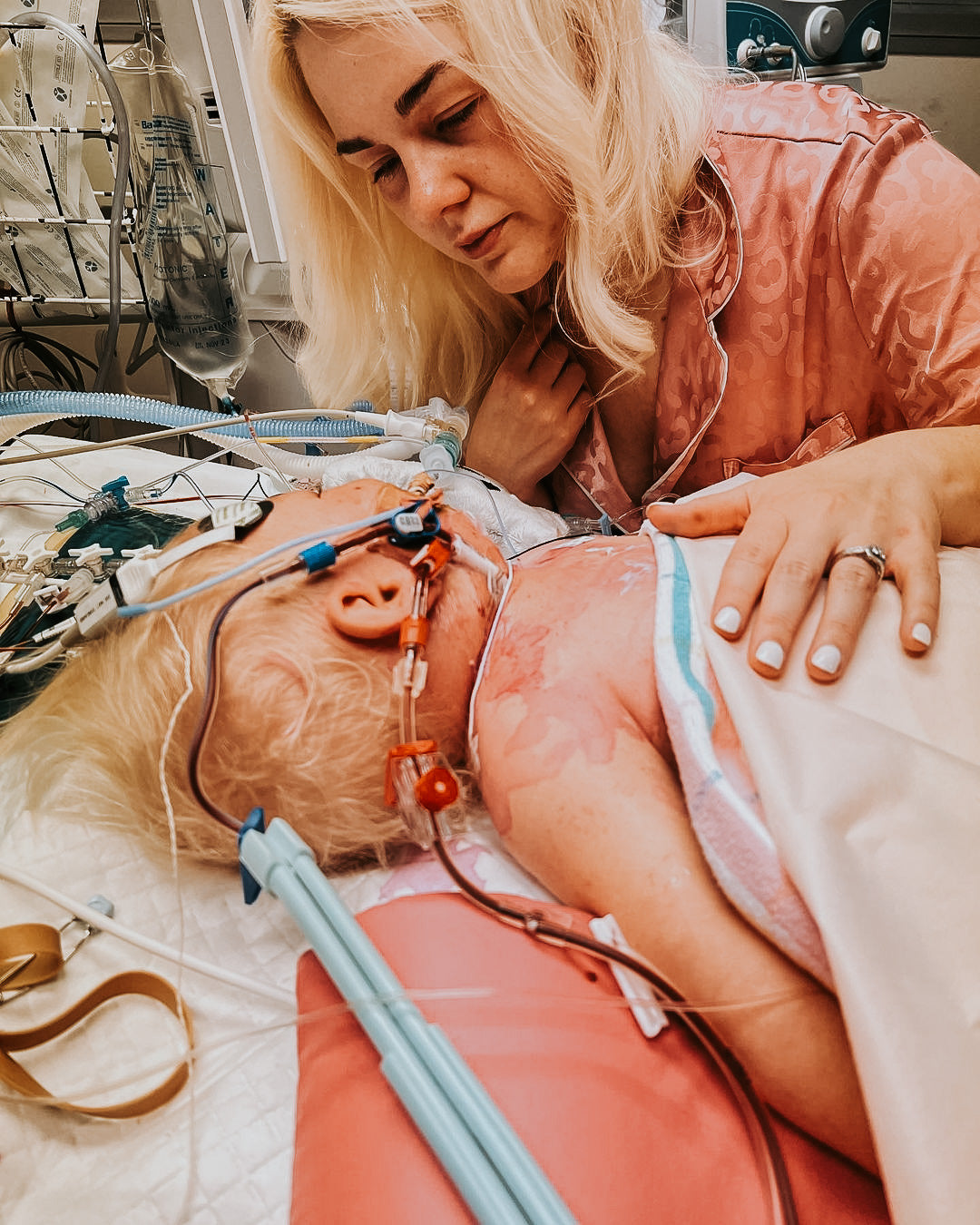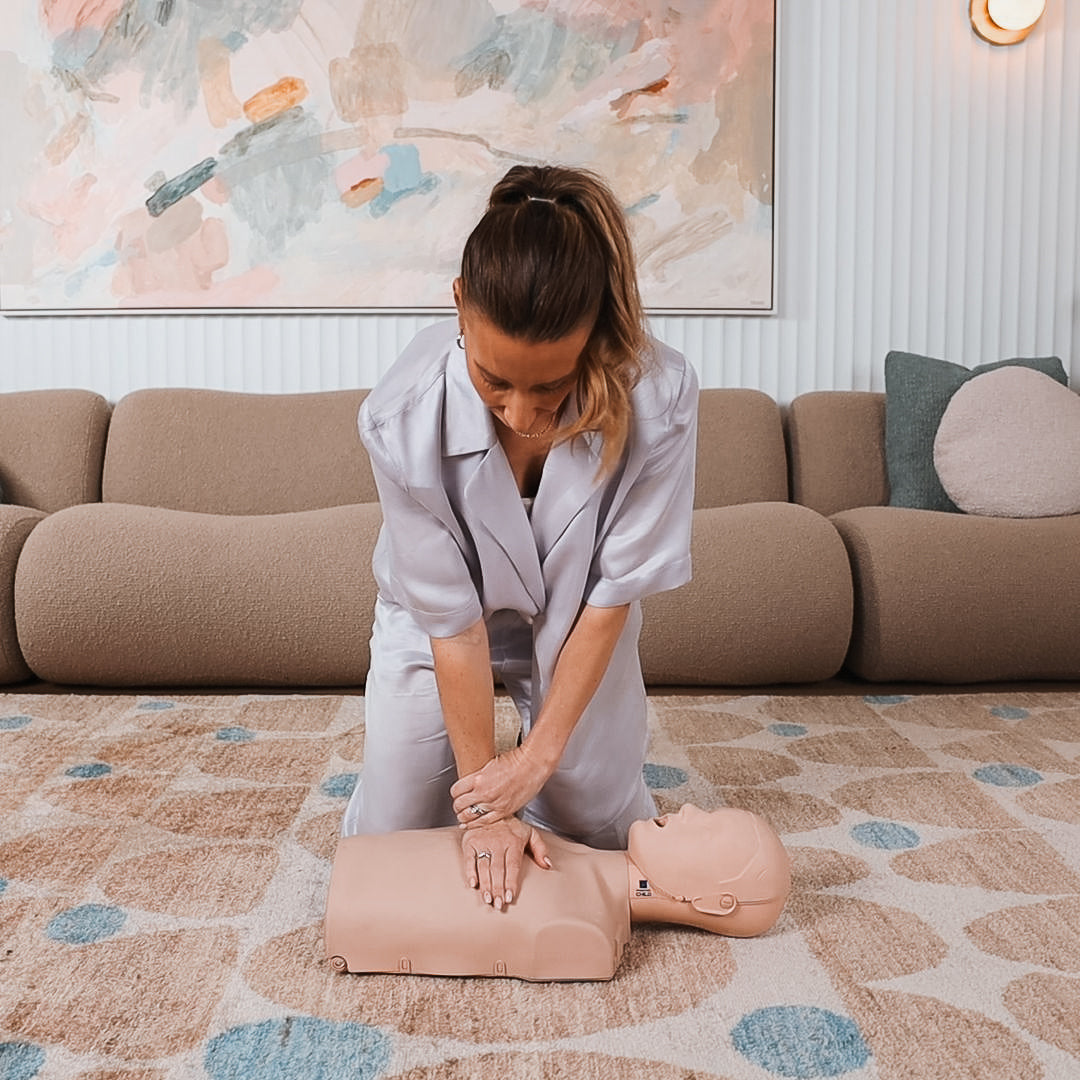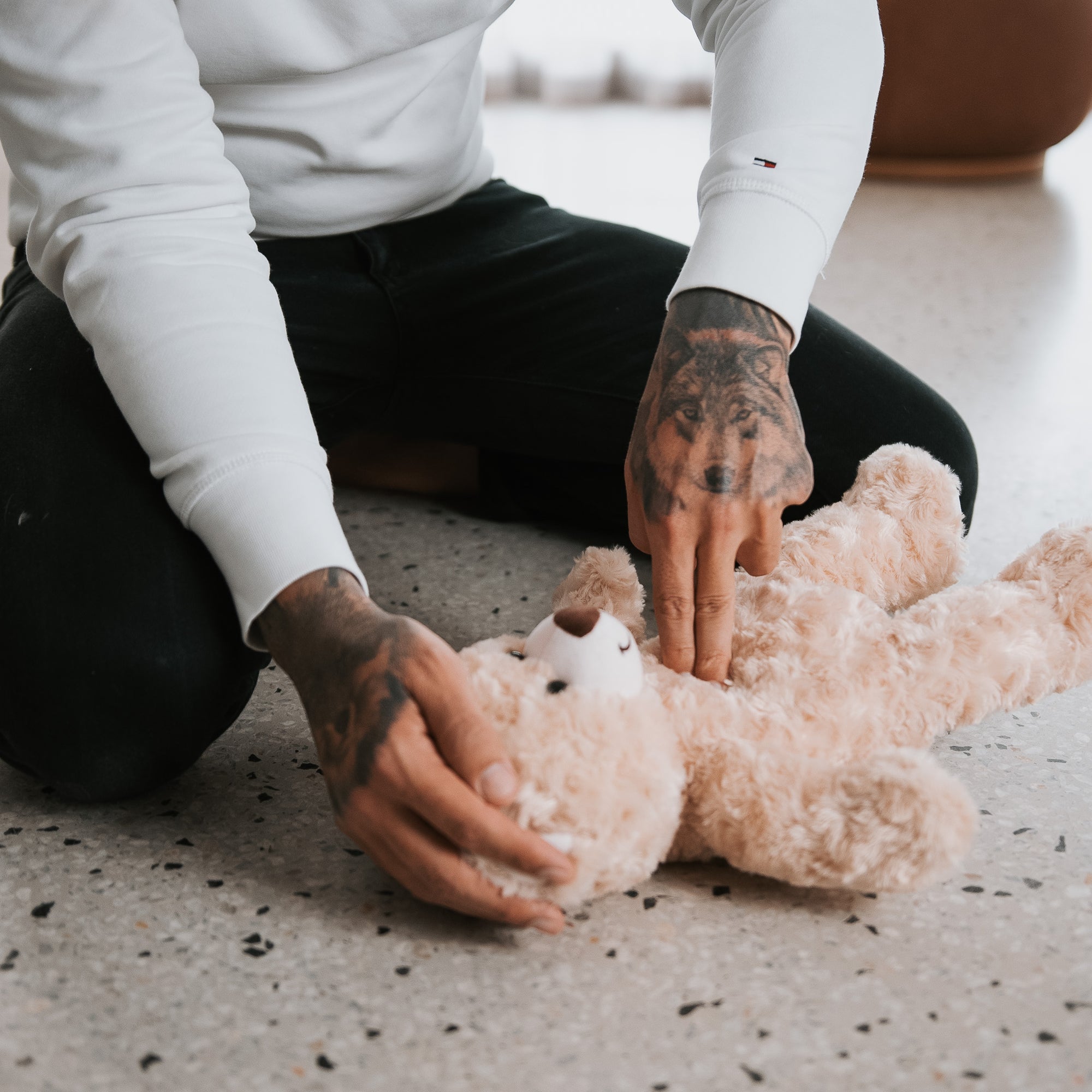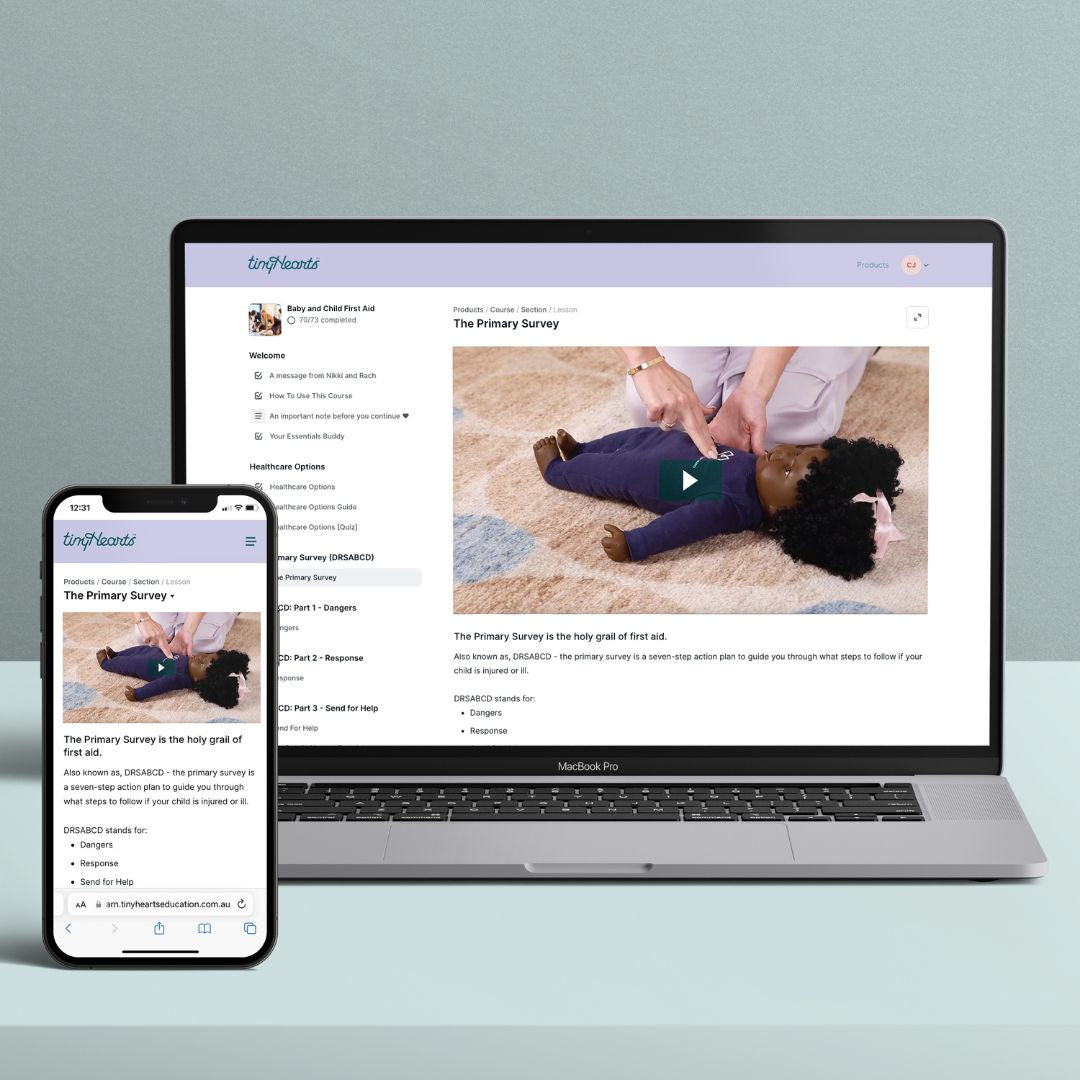

· By Tiny Hearts
Group A Streptococcus - How to recognise the signs and keep your family safe
What is Group A Streptococcus?
Group A Streptococcus (Strep A) is a bacteria that usually causes mild diseases like sore throats and school sores. For the most part, it is a common infection that shows as a mild illness that many people recover from without needing to see a doctor. However, the cases where it becomes more serious and life-threatening are when the bacteria invade the body and enter areas such as the blood. This is called invasive Group A streptococcal disease
How common is it? How many people have been infected with it?
According to data from the Department of Health's National Communicable Disease Surveillance Dashboard, there were 1163 cases of iGAS in Australia in 2022. A study from the Murdoch Children't Research Institute found the number of children admitted to hospital with strep A rose from 23 in 2020 to 107 in 2022. In 2022, Victoria had 42 cases of invasive strep A infections at RCH and Monash Children's hospital. Two Victorian children died from the illness last year.
As of January 13, there have been 52 infections recorded in 2023. The WHO has documented a rise in the number of invasive strep A cases in a number of countries around the world. There have been recent headlines in the UK where there was an increase in the number of infections, causing tens of thousands of cases of scarlet fever and the deaths of 25 children.
What is causing the spike in numbers?
There are a few theories on the cause of the spike in numbers. One of these is that because of the lockdowns, people were all insulated from infectious bugs, including strep A. This means that fewer people were getting low-grade infections of the strep A bacteria, and this reduced people's immunity to it. Another theory is that the rise in other respiratory illnesses, such as influenza, means more people are getting sick. Viruses can cause damage to the lining of the throat, which opens up the opportunity for the invasion of bacteria into the bloodstream.

What are the symptoms of Group A Streptococcus?
The symptoms your child shows will depend on where the infection develops in the body.
Symptoms of strep throat:
- pain when swallowing
- fever
- muscle aches and pains
- tiredness
Symptoms of scarlet fever
- red, sore throat
- swollen glands
- fever
- red blotches on the skin
Symptoms of Impetigo
- red sores on the skin that form blisters
- blisters pop and leave a moist area with a yellow/brown crust at the edge
Symptoms of cellulitis
- skin is red, painful and swollen
- skin feels tight and warm to touch
Signs the bacteria is progressing to invasive Group A Streptococcus
So if strep A is a common illness that can self-resolve, how can you tell when your little one has the more sinister Invasive Group A Streptococcus? Look for the same red flags and signs of any critically unwell child. If you see any of these things, take your child to the hospital.
Signs of invasive strep A:
- Fevers/chills
- Dizziness
- Shortness of breath
- Stiff neck
- Nausea
- Vomiting
- Red skin infection
- Red sunburn-like rash
- Limb pain and reluctance to walk
- Abdominal pain
- Lethargy
- Decreased urine output

Why Invasive Group A Streptococcus is so serious
Invasive Group A streptococcus is when the bacteria infect a normally sterile part of the body such as the blood, meninges, joint spaces, heart muscles and bone. When these areas are infected, it can cause Group A streptococcal toxic shock syndrome (STSS). This can result in disseminated intravascular coagulation, which is when the blood clots inside the blood vessels when it isn't supposed to. This can cause blockages in vessels leading to vital organs, and at the same time, puts the patient at risk of bleeding out. Another rare but serious complication of Group A strep is Necrotising fasciitis, also called the "flesh-eating disease". This is a bacterial infection that can spread rapidly and lead to sepsis, organ failure and death. This happens when the bacteria invade the skin, multiply quickly and releases toxins that cause blood to clot in the blood vessels. This results in the death of the tissues in the skin and muscle.
How is it treated?
The earlier treatment can be commenced, the better. That is why recognising signs of a critically unwell child and being able to tell it's more than just a normal bacterial infection is so key. Strep A is treated with antibiotics.
How do kids catch it?/How is it spread?
The bacteria is spread through large respiratory droplets (coughing, sneezing) or direct contact with infected people.
How can I prevent it?
The best way to protect yourself from Group A Strep is similar to any other bacteria, practice good hygiene and wash your hands often. Avoid contact with people who are infected with the bacteria. Get treatment for skin infections promptly to prevent them from spreading.
Is there a vaccine available for it?
Currently, teams are working on developing a preventative vaccine, but at the moment, there are no current vaccines available.
16 comments
-
Thanks for sharing the knowledge on this nasty bug, we should always keep checking the red flags. My heart goes with poor little boy, Archie. I m crying while reading his heart wrenching story. God please give strength to the family. Hare Krishna 🙏
Mani on
-
My daughter was diagnosed with this this week. She only displayed symptoms of extreme irritability which isn’t like her and clingy. She is 1 and goes to daycare so snot and cough is not a baseline for sickness it’s permanent. I took her to the GP who thought it was teething but he had done a nasal swab and when he called me with the results we were both so shocked. The antibiotics have helped. This story is so gut wrenching to read
Samantha on
-
My daughter was 18 months and was in hospital for a week after having hip surgery and a spica cast put on-it was really warm in the hospital, but she developed a heat like rash on her back that was really itchy, and a day later started with spots around her mouth that turned into scabby sores-I recognised it was impetigo and asked for help…luckily as we were in hospital, they ran tests and it came back she had strep A, so was quickly put on to antibiotics. Prior to the hospital visit, she had vomited once but had otherwise shown no signs, strep a had obviously been on board, but we think that the tape used around her mouth during the operation had helped the bacteria to turn into impetigo, and I’m just so grateful it was recognised and treated quickly.
Kate on
-
My son had strep A along with influenza and rhino virus, he had no skin rashes but every other symptom listed, the bacteria unfortunately went into his bloodstream which caused multiple organ failure he is now suffering with HUS kidney disease. So thankful for the family for raising awareness. So sorry your family had to go through that!
Megan on
-
Within the last 6 months both of my children have had Strep A infections and in both cases ended up with Scarlet Fever. With the first case it took my daughter 3 days to be diagnosed even with the sunburnt rash covering her body, she declined quickly and ended up in hospital for 4 days on a drip with fluids and antibiotics. Second time I was able to push for antibiotics with my son knowing exactly what it was and thankfully didn’t have the rapid decline. We were always told it was such a rare illness not seen these days so hard to diagnose. My heart goes out to Archie and his family ❤️
Dannii on
-
We have just left hospital following 6 weeks with our 13th at old boy having Strep A sepsis. We were originally sent home from ED but called back following blood results, if you think something is not right please ask for blood cultures. My son spent 8 days in ICU and had 3 surgeries but is doing well. If blood cultures had not been done on the first time we went to hospital it would have been a different story.
Please also note that after 3 weeks of IV antibiotics the infection re-grew post our first discharge so please be very careful.
Meagan on
To the extent permitted by law, Tiny Hearts excludes any liability, including any liability for negligence, for any loss, including indirect or consequential damages arising from or in relation to the use of this blog content.
This blog may include material from third party authors or suppliers. Tiny Hearts is not responsible for examining or evaluating the content or accuracy of the third-party material and it does not warrant and, to the fullest extent permitted by law, will not have any liability or responsibility for any third-party material. This blog was written for informational purposes only and is not a substitute for professional medical advice. Nothing contained in this blog should be construed as medical advice or diagnosis.The content on our blog should not be interpreted as a substitute for physician consultation, evaluation, or treatment. Do not disregard the advice of a medical professional or delay seeking attention based on the content of this blog. If you believe someone needs medical assistance, do not delay seeking it. In case of emergency, contact your doctor, visit the nearest emergency department, or call Triple Zero (000) immediately.
Would you know what to do in a first aid emergency with your little one?
What can make the biggest difference in an emergency is what you, as a parent, do BEFORE the ambulance arrives. Knowing what to look for, when to treat at home or when to escalate can be the difference between life and death.
Created by first responders, this course is designed to provide you with reassurance and confidence to provide care to your child when they need it most.
As parents ourselves, we understand finding the time to learn first aid can be tricky! We've created this online course so you can learn from your device at home. Purchase now and learn first aid right away, at the pace that suits you.
Our online course covers CPR, choking, allergies and much more. Follow and practice along with our expert educators and co-founders of Tiny Hearts through several scenarios to reinforce your knowledge and feel confident and ready for any first aid emergency with your little one.








